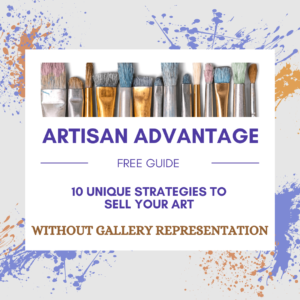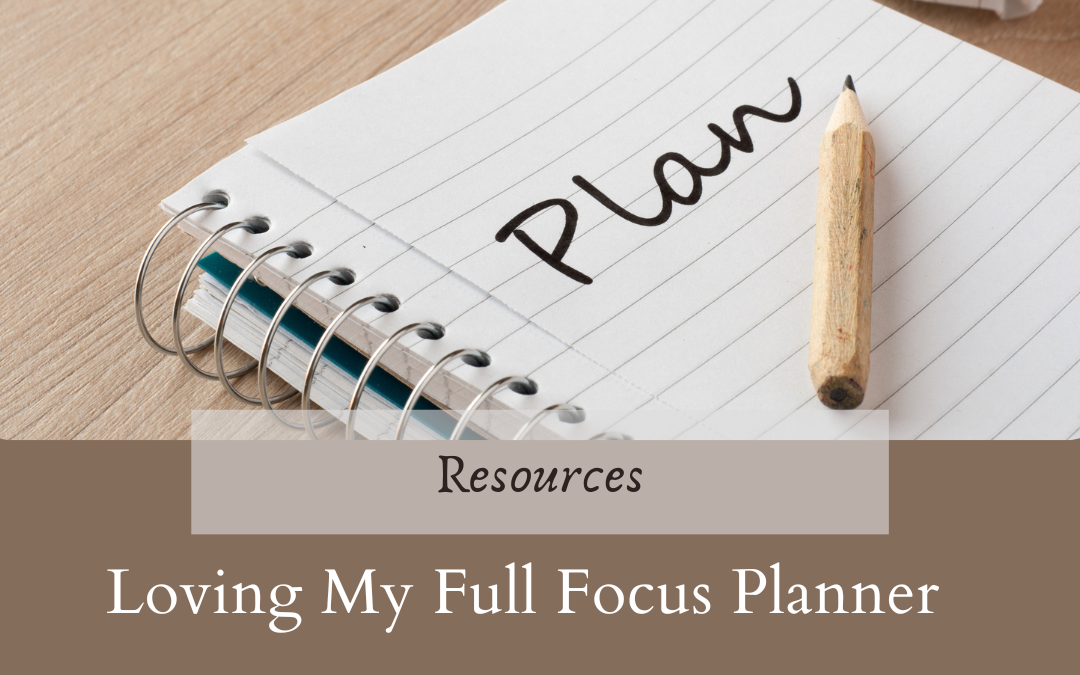
by Rebecca Sciullo | Nov 1, 2023 | Planning, Resources
Reviewing the Full Focus Planner by Michael Hyatt
It’s November 1st, so it is time to sit down and make my monthly 40-day plan. One tool that plays a big part in this plan is my Full Focus Planner by Michael Hyatt.
In the saturated world of productivity tools and planners, finding the right one to suit your needs can be overwhelming. I’ve tried everything from online tools to printed material. Over the years, some of the tools I’ve used have come and gone, but the one consistent product that keeps me on track is this planner—a comprehensive, goal-oriented planner designed to help you make the most of your time and achieve your goals.
While I use Google for my online calendar and Notion to keep my projects on track, the Full Focus Planner is my big-picture tool for planning my year, month, weeks, and days.
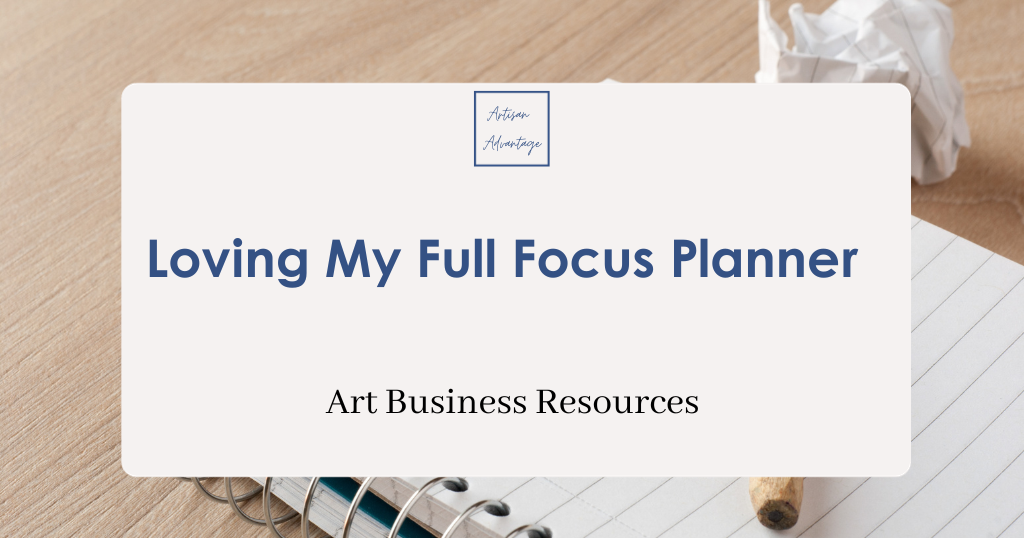
This post contains affiliate links which means I receive a small commission if you make a purchase using the link. For more information, see my full terms here.
Here’s a closer look at what makes this planner stand out.
Goal-Centered Approach
The Full Focus Planner is built around a goal-oriented framework, encouraging me to set clear objectives and break them down into manageable tasks. This focus on goal achievement is a standout feature.
Daily Rituals
The planner uses daily rituals to enhance productivity and mindfulness. Coaxing me into these daily rituals over time has promoted a balanced work-life dynamic. Daily rituals include one in the morning to set priorities and one in the evening for reflection and planning.
Quarterly Goal Setting
With the Full Focus Planner, you set and revisit your goals every quarter. This approach keeps you agile and adaptable, allowing you to adjust over time.
Built-in Time Blocking
Time blocking is seamlessly integrated into the planner, helping you allocate your time effectively and ensuring you stay on track throughout the day.
If you seek a tool to help you set, track, and achieve your goals with intention and accountability, Michael Hyatt’s Full Focus Planner is a great choice.
Get Your Planning Together for 2024 with this Guide
Would you like to put together a 12-month plan for your art business. Consider my Digital Guide to help you make your plan.
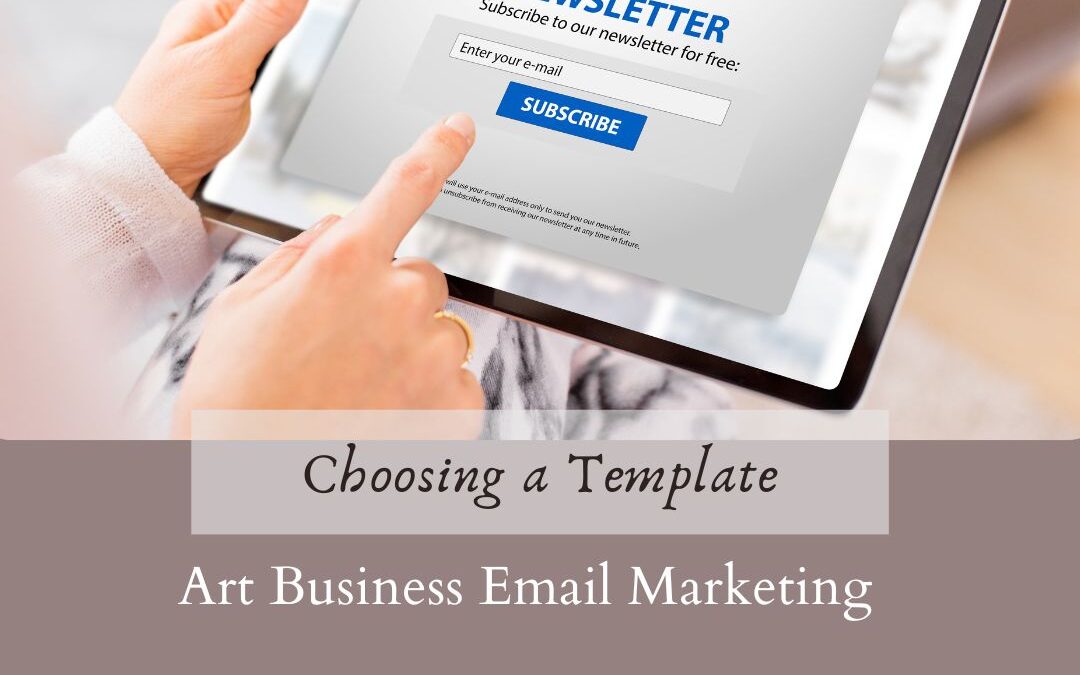
by Rebecca Sciullo | Sep 18, 2023 | Channels
How to Choose the Perfect Email Newsletter Template for Your Art Business
Email newsletters are invaluable for you to connect with your audience. When setting up your email marketing system, choosing and using a consistent template for you to use each time you send a message, makes it easier to communicate effectively on a consistent basis.
Set up your email marketing system.
If you subscribe to my weekly newsletter, you might notice that it looks consistent from week to week. This is because I have a simple pre-designed template that I use to create my messages. I use the same header and information is presented in the same format each time I send a message. This system allows me to easily create my messages, without having to recreate the wheel.
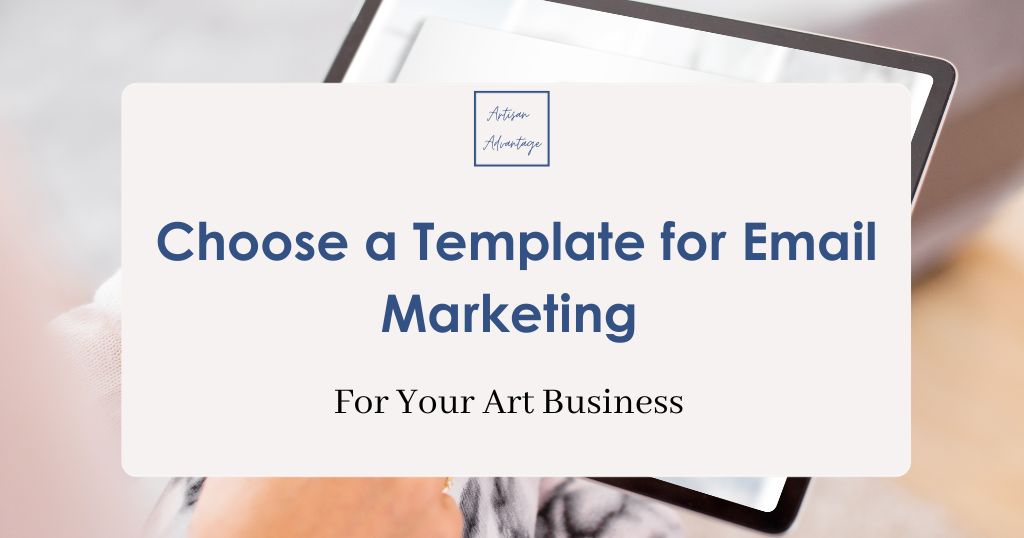
What’s a Template?
A template in email marketing is a pre-designed layout or structure for creating email campaigns. It includes placeholders for text, images, links, and other elements.
Using a template helps to maintain a consistent and professional look for your messages. Templates will also save you time and ensure consistency across your campaigns. They are customizable, allowing for the insertion of unique content while adhering to the established design, which enhances brand recognition and the overall effectiveness of your email marketing efforts.
But with countless options available, how do you choose the best template for your art business? Here’s a guide to help you navigate the process.
How to Choose Your Email Template
Know Your Artistic Brand Identity
Your email newsletter should reflect your unique brand identity. Choose one that aligns with your colors, style, and aesthetics. Consistency is key to building recognition and trust among your readers.
Consider Layout and Content
Different templates offer varying layouts for content placement. Think about the content you’ll be sharing—new art, blog posts, or event updates—and select a template that presents your content in an engaging and organized manner.
Mobile Responsiveness:
Choose a mobile-friendly design for today’s mobile-centric world.
Visual Appeal
Look for templates that allow you to showcase your artwork, photography, or visuals prominently.
Customizability
While templates offer a starting point, the ability to customize is crucial. Choose a template that allows you to tweak colors, fonts, and layouts to make it your own.
Call-to-Action
Whether selling art, promoting an event, or sharing a blog post, ensure your chosen template provides ample space for clear and compelling calls to action.
How to set up your template.
In a couple of weeks, I’ll post the steps to choosing and setting up your template in your email marketing platform. Join my weekly newsletter here so you won’t miss the post.
More Resources
Want to learn more about email marketing for an artist ? You might like Building an Email List for Your Art Business.
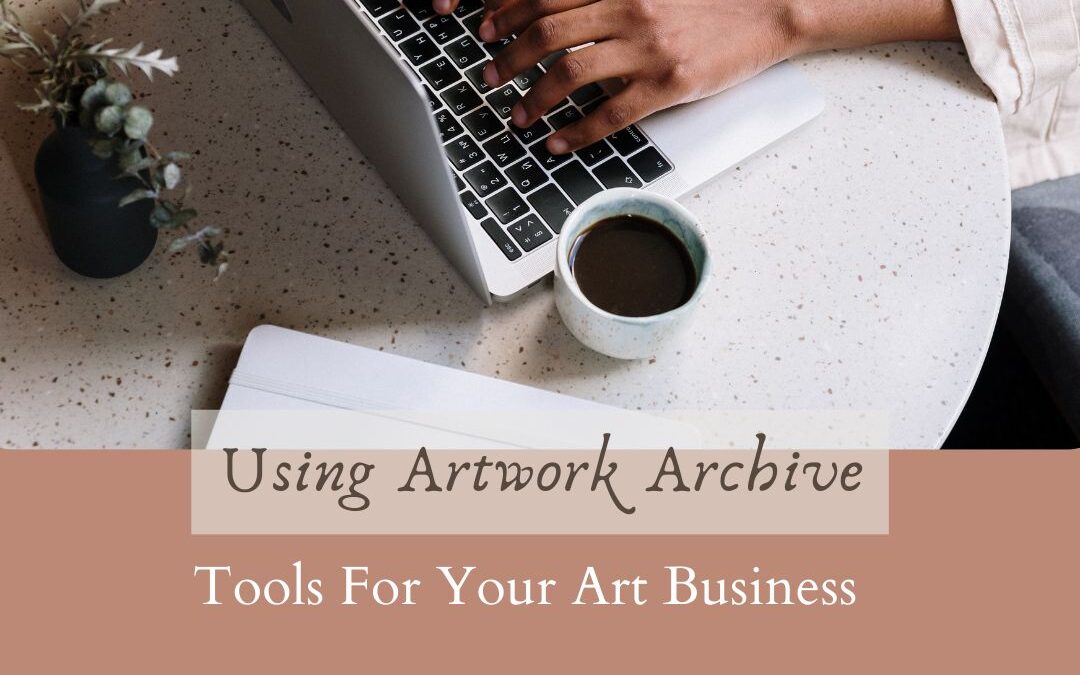
by Rebecca Sciullo | Aug 28, 2023 | Resources, Tools
Artwork Archive – A Powerful Tool For Artists
If you’ve attended one of my events or worked with me one-on-one, you’ve heard me mention Artwork Archive. It’s a tool I use daily for my artist clients. My enthusiasm for it grows more and more every time I use it.
This powerful platform offers many features to streamline various aspects of your art business, from inventory management and sales tracking to marketing and exhibition planning.
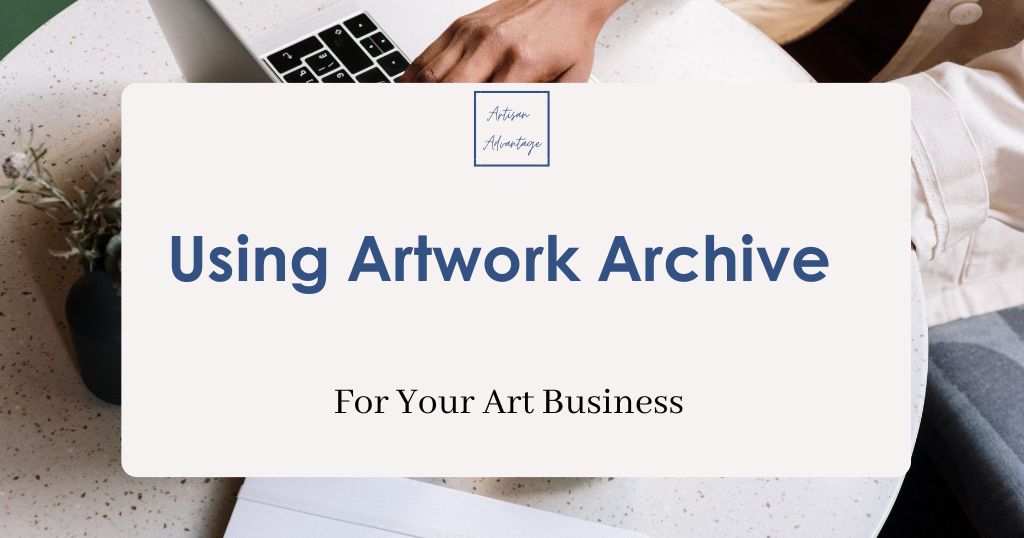
Here are some of the ways this tool can help your art business.
Inventory Management
Artwork Archive provides artists an intuitive platform to catalog and manage their artwork inventory. With features like customizable categories, detailed descriptions, and storage of high-resolution images, you can easily organize your art collection. This organized approach makes tracking each artwork’s details, location, history, and pricing simple, helping you maintain an accurate and up-to-date inventory.
Simplified Sales Tracking
Keeping track of sales is crucial for understanding your business’s financial health. Artwork Archive enables you to record sales, generate invoices, and track payments, all within the platform.
Streamlined Contact Management
Building relationships with collectors, clients, galleries, and fellow artists is integral to your art business’s growth. Artwork Archive offers a contact management feature that allows you to maintain a comprehensive contacts database. You can easily access their information, track interactions, and communicate directly through the platform, enhancing your networking capabilities.
Effortless Exhibition Planning
Planning an exhibition can be a complex process. Artwork Archive simplifies this by providing tools to organize exhibitions, manage event details, and keep track of artwork loans.
Online Public Profile
In today’s digital age, having an online presence is crucial for artists. It offers a customizable public profile where you can showcase your art collection, share your artistic journey, and connect with potential buyers and collaborators. This professional portfolio platform boosts your online visibility and establishes your credibility as an artist. I still recommend a dedicated website, but there are ways to use this tool to enhance your digital presence.
Data Storage and Backup
Your valuable art inventory, sales records, and contacts are stored securely on the platform’s cloud-based servers, eliminating the risk of losing important information due to hardware failures. Additionally, regular backups ensure your data is safe and accessible at all times.
Time-Saving Automation
By automating many time-consuming tasks, this tool frees up more of your time for creativity. Instead of managing spreadsheets and paperwork, you can focus on producing art and engaging with your audience. This improved efficiency allows you to balance artistic pursuits and administrative responsibilities better.
Give it a try.
In the competitive world of selling art, leveraging the right tools can significantly impact your success. Artwork Archive offers artists a comprehensive platform that simplifies inventory management, sales tracking, contact management, exhibition planning, and more.
Don’t take my word for it though. Give it a try for yourself. Artwork Archive offers a free 14 day trial with no need to give a credit card. If you like the trial, you can then purchase it at a 20% discount.
I am an affiliate and will receive a small referral fee if you decide to purchase Artwork Archive. But, please know, I only recommend things that I use or really believe in!
Send me your questions!
If you decide to try it out, send me an email at becky@artisan-advantage.com if you have any questions while you are using it.
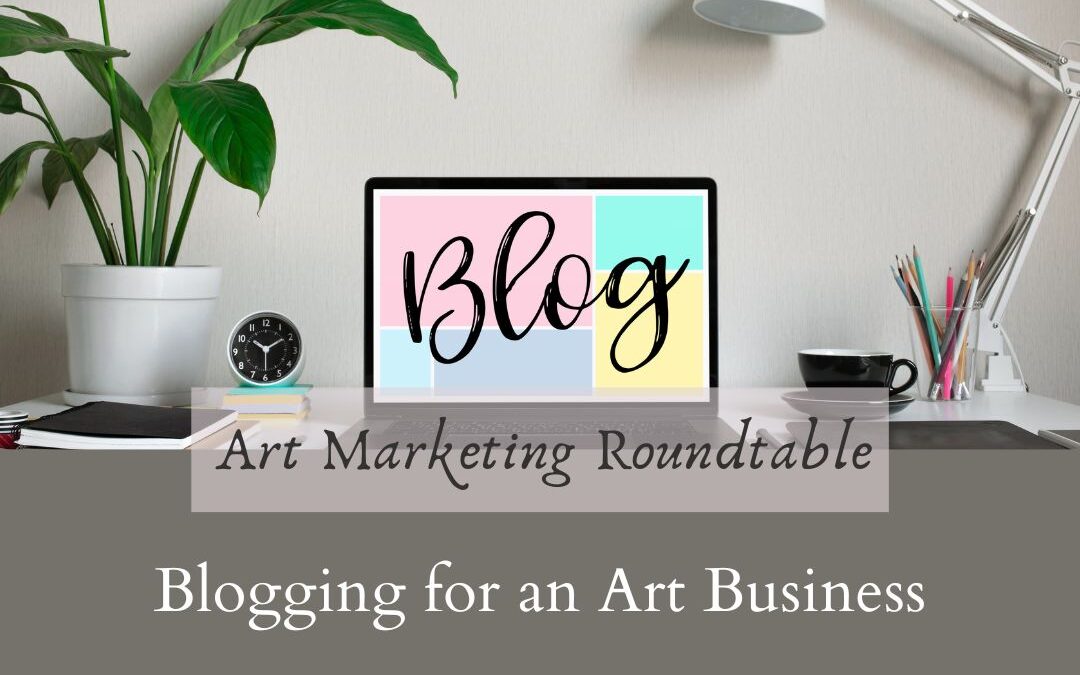
by Rebecca Sciullo | Aug 8, 2023 | Learning
Blogging for Your Art Business
Having a solid online presence for your art business is crucial for success. One powerful tool that can significantly enhance your art marketing strategy is blogging. Whether you’re a painter, sculptor, photographer, or any other artist, blogging can help you connect with a broader audience, build your brand, and increase your art sales.
I’m excited to announce the next Art Marketing Round Table – “Blogging for Your Art Business.” This interactive event will share insights, strategies, and success stories about leveraging blogs to promote and sell art.
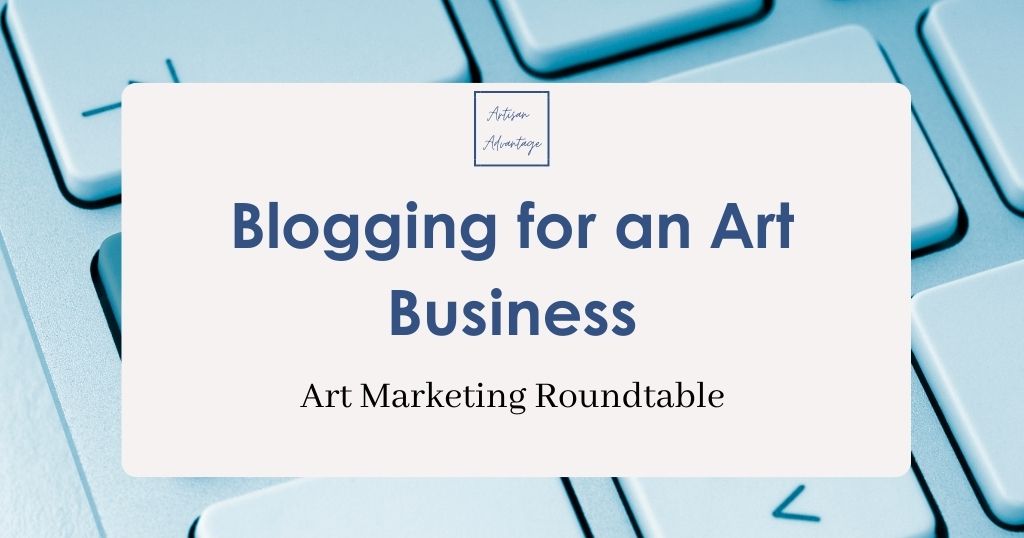
Why Attend the Art Marketing Round Table?
Gain Valuable Insights: We’ll cover topics such as creating compelling content, optimizing your blog for search engines, and some hidden benefits of blogging.
Get Inspired: Blogging is an art form in itself. It allows artists to showcase their creativity beyond their physical artwork. You’ll learn ways to express your artistic vision through the round table discussions through engaging blog posts. Discover fresh ideas, storytelling techniques, and visual strategies to elevate your online presence.
Unlock Business Opportunities: A well-crafted blog amplifies your artistic expression and opens doors to new business opportunities and collaboration.
Event Details:
Date: September 20, 2023
Choose between two time slots!
Limited seats are available, so reserve your spot now!
How to Participate:
To join us at the Art Marketing Round Table, register for one of two time slots here.
Blogging has emerged as a powerful marketing tool, enabling artists to connect with their audience, showcase their work, and build a thriving art business. Take advantage of the opportunity to learn how to start or improve on using this tool.
I look forward to seeing you at the round table!

by Rebecca Sciullo | Jul 24, 2023 | Learning, Planning
Write A One-Page Business Plan for Your Art Business
Recently I was asked if I had a business planning template that I could offer to an artist. While I’ve attempted to create them over the years, the truth is that when I work with an artist on planning, I typically start from scratch for each artist. I don’t have a one-size-fits-all plan for my clients.
So, where does an artist start when making a business plan?
While you might be inclined to write a detailed plan, sometimes a concise and focused approach can be just as practical. You can start by mapping things out on one page, which is how I started working after reading Chris Guillebeau’s $100 Start Up several years ago. While it’s not specific to an art business, the book offers an excellent overview of how to map out a business on one page. And it puts you in a great frame of mind to start your planning.
Don’t Overcomplicate Things
While exploring how to create a one-page business plan specifically tailored to the needs of your art business, avoid bogging yourself down in too many details. Keep things simple while focusing on key points to keep yourself on track.
Outside of the template offered in The $100 Start Up, here are some other areas you can map out on one piece of paper.
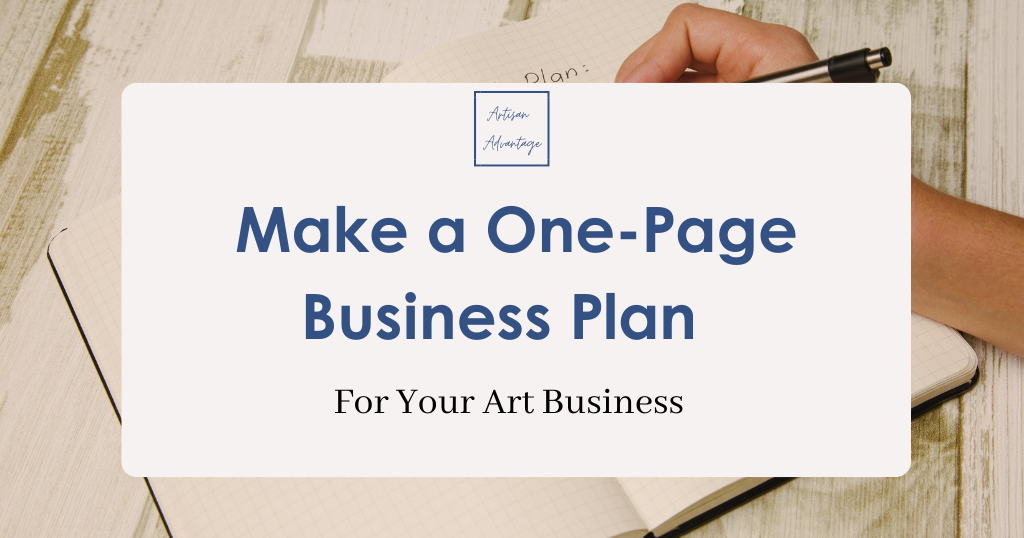 This post contains affiliate links which means I receive a small commission if you make a purchase using the link. For more information, see my full terms here.
This post contains affiliate links which means I receive a small commission if you make a purchase using the link. For more information, see my full terms here.
Here are some things to consider with your one-page plan.
Define Your Vision and Mission
Begin your one-page business plan by clearly defining your vision. Your vision is simply a picture of what you want your business to look like in the future. Make it concise, capturing what you want to accomplish and how you want to impact your audience or the art community. Remember, your vision can change over time. You are not locked into it, but having a starting point helps move you in the right direction.
Identify Your Target Audience
Understanding your target audience is crucial for any business, including art enterprises. Who are the likely people who will purchase your work? This will help you tailor your artistic style, marketing efforts, and communication strategies to resonate with your intended audience.
Artistic Offerings
What is it that you are offering or selling? Highlight what sets you apart from others and articulate the value it brings to your customers. Whether you specialize in paintings, sculptures, digital art, or other mediums, clearly define your artistic offerings.
Competitive Analysis
Conduct a brief analysis of the competitors within your chosen market. Understanding your competition enables you to refine your artistic style and marketing strategies to stand out in a crowded marketplace.
Marketing and Promotion Strategies
Outline your key marketing and promotion strategies on your one-page business plan. Consider online and offline channels, such as social media platforms, art exhibitions, galleries, art fairs, and collaborations with other artists or influencers. How will you get your work in front of people to move your business forward?
Financial Considerations
Even with a condensed business plan, you should include a brief overview of your financial considerations. Identify your art business’s revenue streams, pricing strategies, and anticipated costs or investments. While not exhaustive, this section will provide a basic understanding of the financial landscape of your enterprise.
Milestones and Action Steps
Specify the key milestones and action steps required to achieve your goals. Break down larger objectives into smaller, manageable tasks with realistic timelines. This will help you stay organized and track your progress as you work towards building your art business.
Evaluate and Adapt
Finally, acknowledge the importance of evaluating your progress and adapting your strategies. As an artist and entrepreneur, the art market is dynamic, and trends can change rapidly. Regularly review your one-page business plan, assess your results, and make adjustments to stay relevant and successful.
Providing Guidance and Structure to Your Business
A one-page business plan can be a powerful tool for artists looking to establish and grow their art businesses. By condensing the key elements of a traditional business plan into a single page, you can focus on the essentials while maintaining a clear direction for your artistic journey. Remember, the purpose of this plan is to provide guidance and structure while leaving room for your creative intuition and creativity to thrive. With a concise roadmap, you can confidently navigate the art market and pursue your passion while building a thriving and sustainable art business.
Would you like some direction for your art business? Read about my Art Business Review. where we can work to put a plan together or breathe new life into your creative venture.
Join my email newsletter for weekly art marketing tips, events, and more.


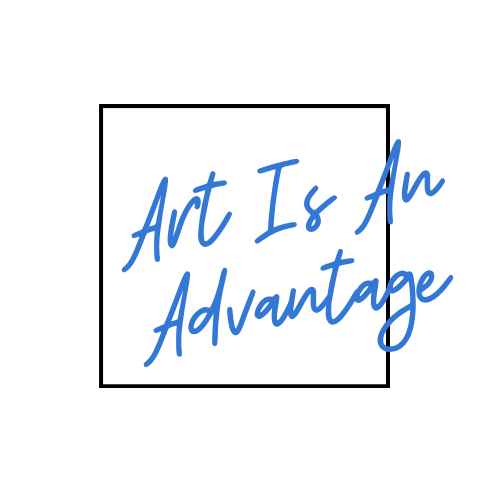







 This post contains affiliate links which means I receive a small commission if you make a purchase using the link. For more information, see my full
This post contains affiliate links which means I receive a small commission if you make a purchase using the link. For more information, see my full 